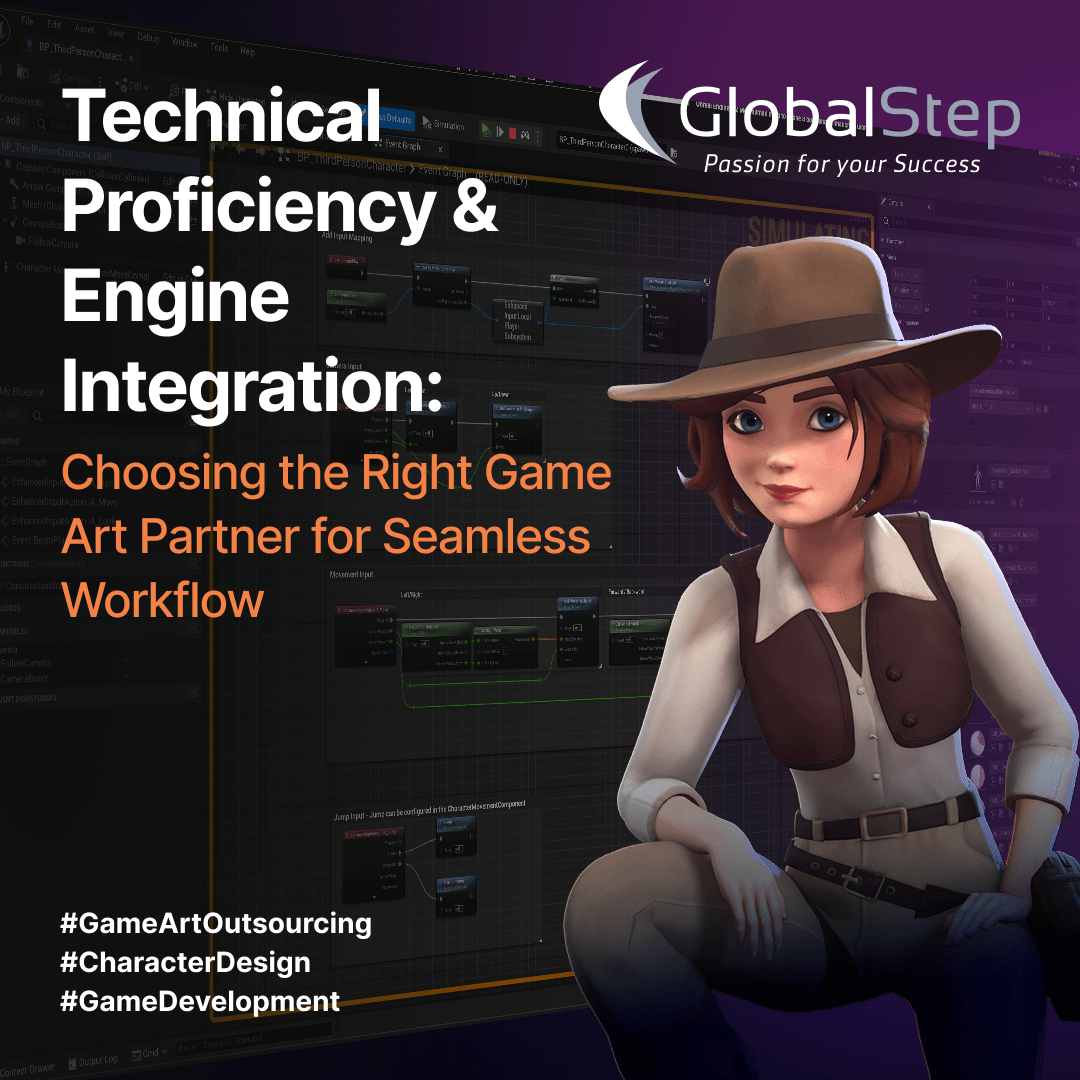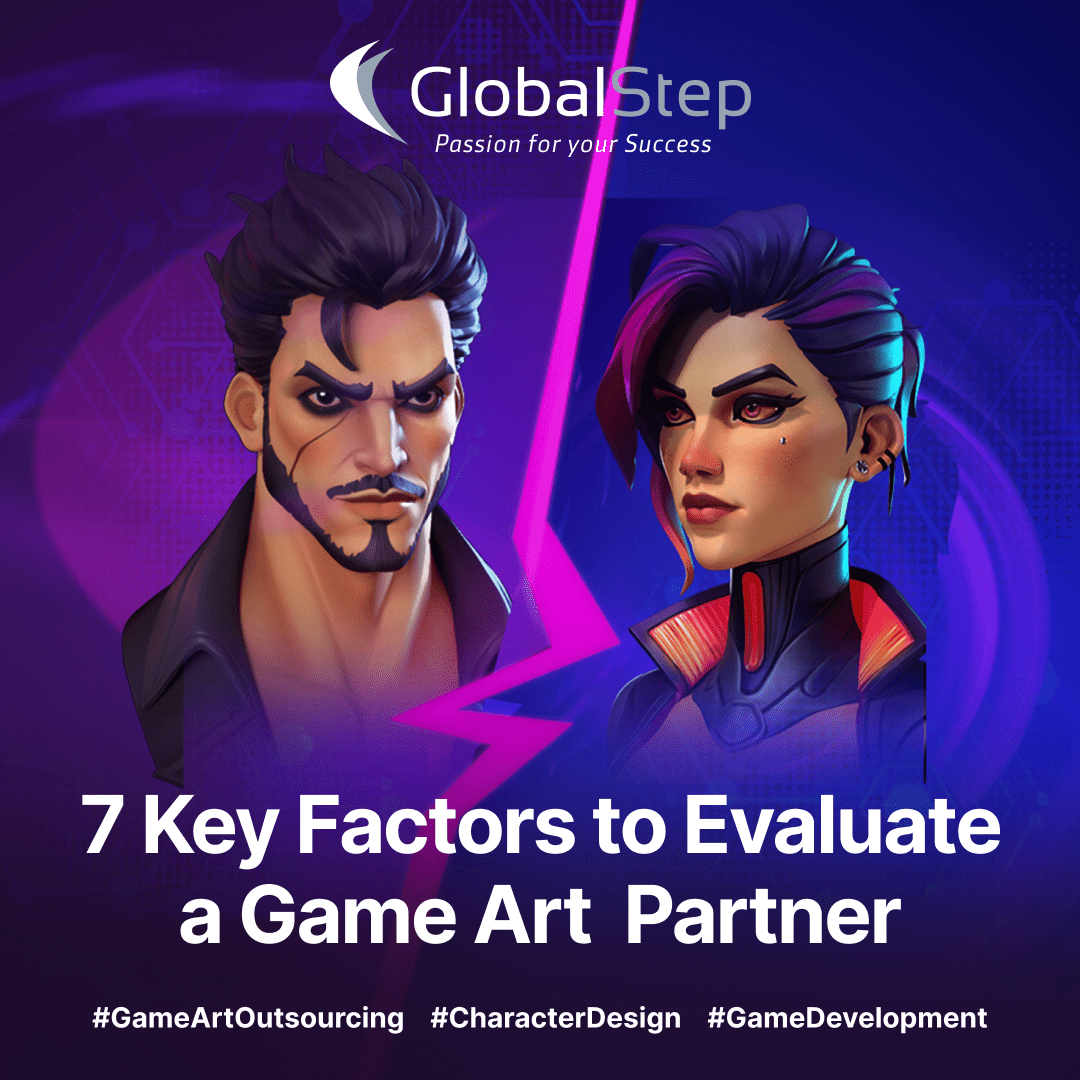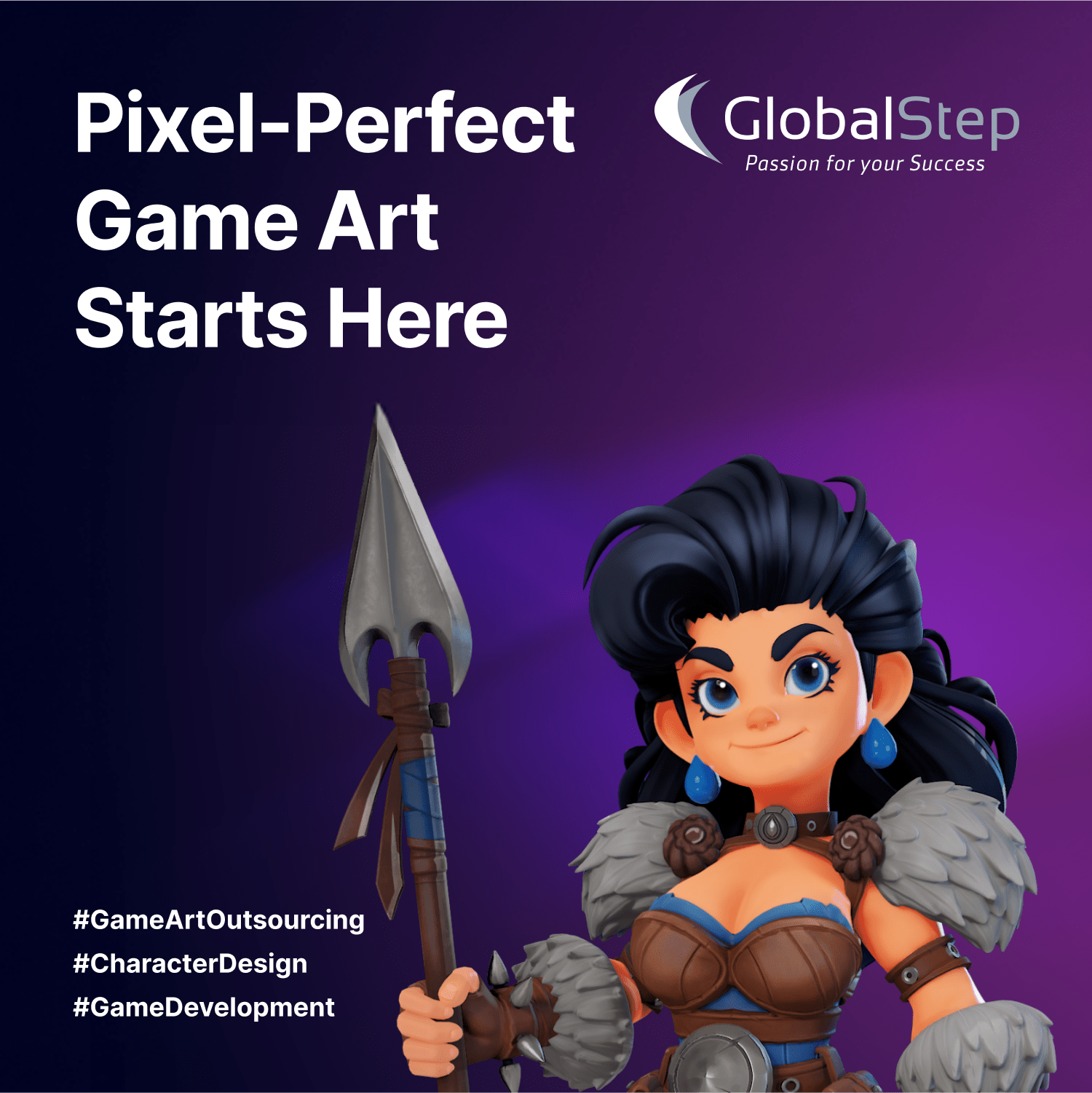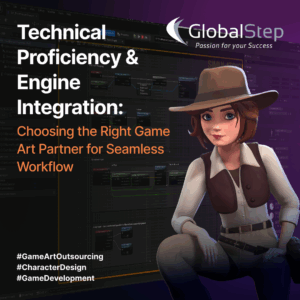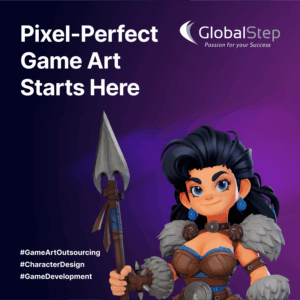
Low framerates kill immersion. Lag or choppy animations at an action moment can turn players off. Although great visuals create a game’s image, it is the performance that keeps players hooked. The key isn’t solely to avoid slowdowns. It’s to ensure the world of the game visually and aurally resembles the world the creators envisioned. Take the Monopoly Man in Monopoly or the character Marcus Fenix in Gears of War. These aren’t just visually pleasing characters. They blend completely into their surroundings and match the tone and look of the game. This visual harmony enriches immersion and encourages investment on the part of the players in the narrative. But achieving that vision in a seamless fashion between various platforms is where the real test begins.
In our previous blog, we discussed why technical proficiency and engine integration are critical when selecting the perfect game art partner. This second step is about ensuring that those technically polished assets deliver in real-time, on any platform, while not sacrificing visual impact.
Optimization is no longer purely a technical solution in game development. It influences player engagement, retention, and long-term success directly. With more studios using cross-platform publishing, playtest analytics, and streamlined pipelines, the requirement for game art optimization is larger than it has ever been.
Gorgeous, But Cumbersome: When Art Becomes A Bottleneck
To the neon-drenched streets of Cyberpunk 2077, to the green, Impressionist-inspired vistas of Ori and the Will of the Wisps, modern game worlds are filled to the brim with visual detail. From intricate foliage to dynamically simulated weather and reactive environments, every detail contributes to the feel of realism and the emotional atmosphere of the game. Each shader, sculpted mesh, and texture map has a cost, however. Based on the game, assets need to be rendered 40 to 60 times every second, or more. High-resolution texture, dynamic shaders, sculpted meshes, post-processing effects, and particle systems add up, stressing hardware and leading to frame drops.
Players quickly pick up on this. Even the most stunning visuals become unimpressive when movement is choppy or control lags behind. Visual detail needs to be weighed against technical efficiency, or otherwise gameplay suffers.
But visual richness is only part of it. These assets aren’t around to be pretty. They have to work. All texture, model, and effect must be constructed to load, stream, instance, and unload both fast and with sufficient capacity remaining for mechanics, AI systems, and input from the player to run smoothly on all the target machines, not just the high-end PC.
Smart Optimization: Ensuring Art Works Harder and Smarter
Luckily, developers employ an array of optimization techniques to retain visual quality while not damaging performance.
Textures are an excellent place to begin. They set up what environments, characters, and objects appear as, yet also represent some of the most memory-intensive assets. Texture streaming, mipmaps, and compression can minimize load times and reclaim memory resources. Lower-resolution versions of textures can be used to reduce memory consumption by teams yet not change the visual experience of objects that don’t need to be that detailed at distance.
Mesh detail is also an area developers achieve results in. Highly detailed meshes are great to look at, but they consume resources. Level of Detail (LOD) modeling is what solves this problem, as it creates multiple versions of every asset. Lower-polygon versions of every asset are used for objects that need to be distant, saving resources while keeping the scene unified. This is particularly useful for open-landscape, foliage, or modular-architecture games.
Shaders and lighting also cause issues. To minimize their performance overhead, developers employ basic shaders with conditionally active features. Light baking is another established technique used to achieve this. Baked lighting stores precomputed data in textures instead of computing lighting in real time. The appearance is fine and smooth.
Reducing draw calls is necessary. Pooling, batching, and instancing identical objects alleviates the number of operations that must be done on every pass of the engine. Clustering these actions enhances stability and maintains consistent performance at the cost of quality.
Above all, these decisions need to be made keeping cross platform porting objectives in sight. Far too often, teams develop for PC and rush to optimize for console or mobile towards the end. Planning multiple platforms ahead of time prevents last-minute compromises and allows for a better overall launch.
Why Art Outsourcing Facilitates Performance
Optimization requires experience and time. Art outsourcing is an option when in-house teams are prioritizing core gameplay systems or under tight schedules. Seasoned outsourcing partners can dive in with extensive knowledge of asset pipelines, target performance, and engine constraints.
By working together up front in the development process, outsourcing teams can provide artwork that is not only aesthetically aligned with your creative vision but also constructed to perform. This means less rework, better integration, and visual targets that won’t interfere with gameplay loops.
Outsourcing also provides an external perspective, and vendors that work on multiple genres and platforms can often propose changes that might not be noticed by internal teams. They know what succeeds and what fails and can raise issues before your next playtest is impacted.
Interested in learning more about outsourcing to further enhance your art objectives? Read our blog, Art Outsourcing in Video Game Development, for more information.
From Workflow Readiness to Performance Reality
At GlobalStep, our role is to assist studios in unleashing both. Our teams not only ensure that art assets tie directly into your engine and pipeline, but also load quickly, run smoothly, and perform well under stress, on every platform.
Simply put, we assist you in producing art that appears amazing and works even better.
Here is how it is done:
- We optimize assets to perform well on PC, console, and mobile.
- From day one, we support LOD strategies, texture compression, batching, as well as memory-conserving practices.
- We run and validate performance on target platforms, enabling you to identify and resolve issues earlier.
- We collaborate closely with your engine and tools teams to make sure that your visuals enhance, rather than tax, your gameplay.
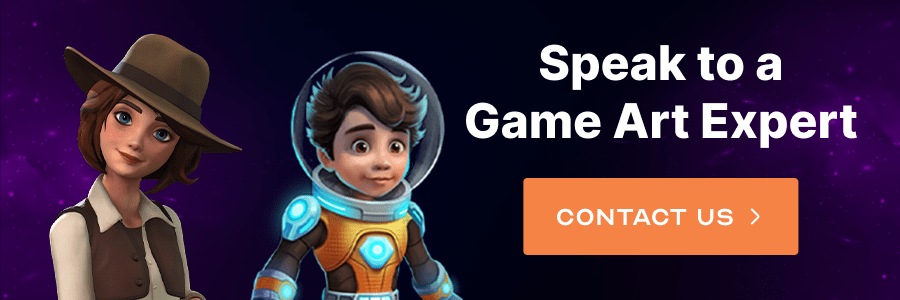
Let’s ensure that the visuals that grab your players also serve to keep them playing.
